#David C Sutherland III
Photo

Advanced Dungeons & Dragons - art by David C. Sutherland III (1978)
#david c. sutherland iii#advanced dungeons & dragons#70s fantasy art#player's handbook#ad&d art#gary gygax#paladin#seventies#1978#chronoscaph scans
195 notes
·
View notes
Text
110. David C. Sutherland III and Gary Gygax - Q1: Queen of the Demonweb Pits (1980)
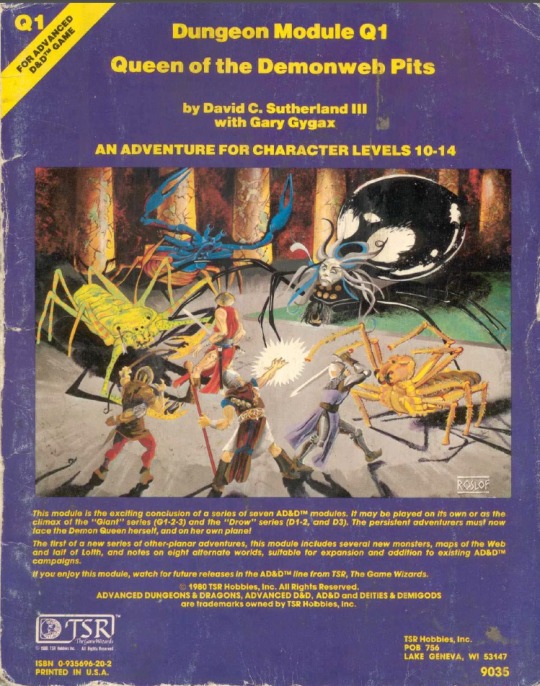
If I complained that the last module (Slave Pits of the Undercity) was too light on story and lore and just a bunch of monsters and rooms to fight in, the same cannot be said about Queen of the Demonweb Pits. This is a fantastic module in more ways than one.

A culmination to the adventures started in G1, this is the seventh module in the series and such a long run demanded an epic conclusion, this certainly is that. It's a strange and unique module as your party goes into Lolth's domain to take the fight to the Spider Goddess. On the way to her you have to go through one of the strangest maps in all of D&D, the art-like Demonweb, an interlacing web of corridors full of overpasses and underpasses as well as doors to other dimensions, teleporting and tough monsters and this is all before you get to Lolth's ship, a spider-shaped steam engine that is also the goddess' keep.
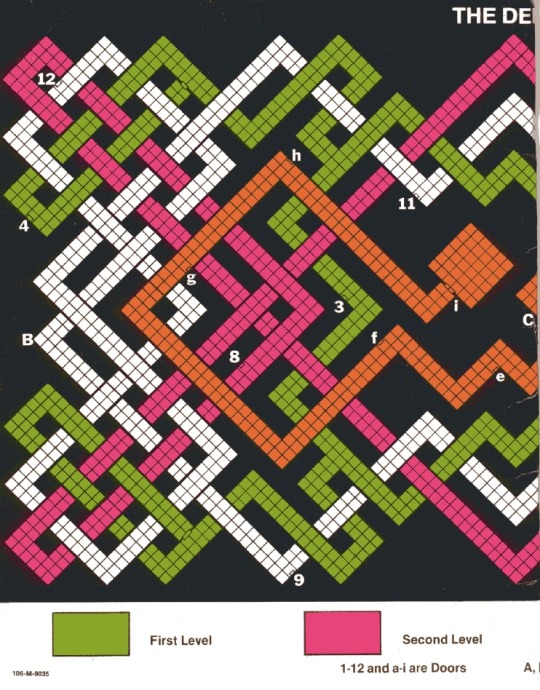
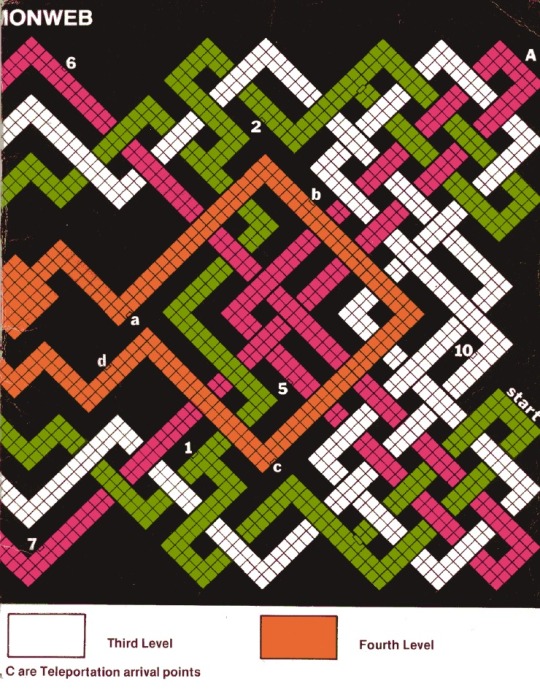
One of the coolest modules in the first decade of D&D, full of surreality and danger as well as deep lore and endless possibilities (you have a set of seven doors each leading to a different universe where characters can have independent adventures as well as optional instructions to add even more universes) this is a fitting end to the long GDQ series of modules.

#adnd#dnd#ttrpg#ad&d#d&d#dnd art#dungeons and dragons#dungeons & dragons#gary gygax#David C. Sutherland III#Lolth#Drow
6 notes
·
View notes
Text
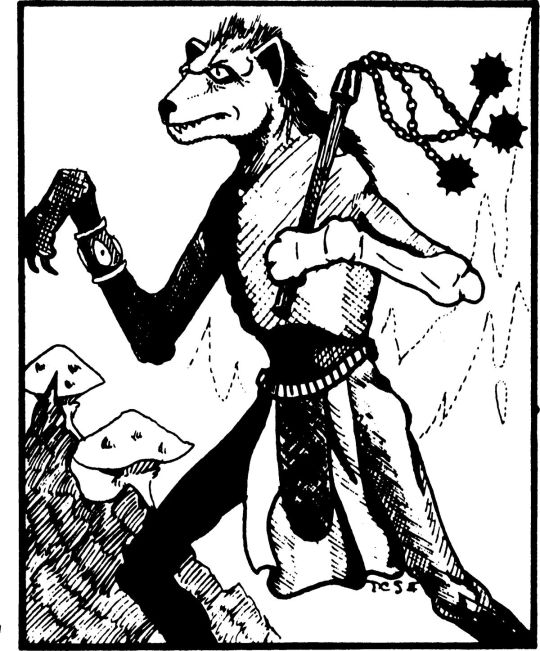
There goes Yeenoghu flailing around again… on Thac0 Thursday!!
Credit: David C. Sutherland III
#thac0 thursday#thac0#thaco thursday#thaco#d&d#dungeons & dragons movie#dnd#rpg#fantasy art#David C. Sutherland III
0 notes
Text
No. 3 - G3, Hall of the Fire Giant King (July 1978)
Author(s): Gary Gygax
Artist(s): Erol Otus, Dave C. Sutherland III (cover), David A. Trampier
Level range: Average of 9, preferably 5+ players
Theme: Standard Swords and Sorcery
Major re-releases: G1-3 Against the Giants, GDQ1-7 Queen of the Spiders, Against the Giants: The Liberation of Geoff, Dungeon #200, Tales from the Yawning Portal
So that was a little disappointing. But maybe it just middles in the middle? C'mon Gary, let's see that special skill I've heard so much about.
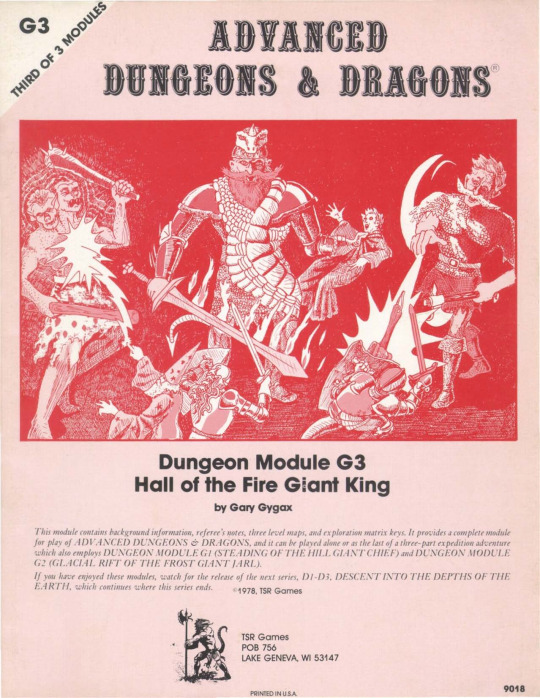
G3 begins how G2 ended: teleporting conveniently on the outskirts of the fortress in such a way as to skip a trek without surprising the players. Meh. Our big bad this time is King Snurre -- I haven't mentioned the Chieftains yet because they're all just midbosses compared to the this guy. And, he's kind of famous isn't he?
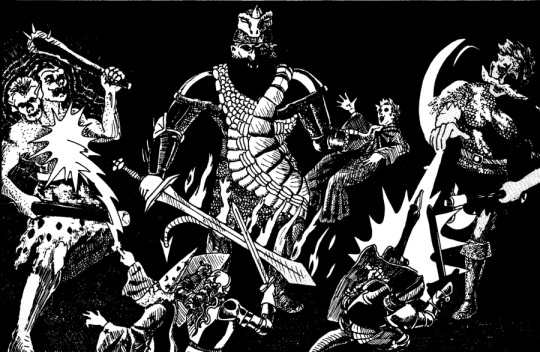
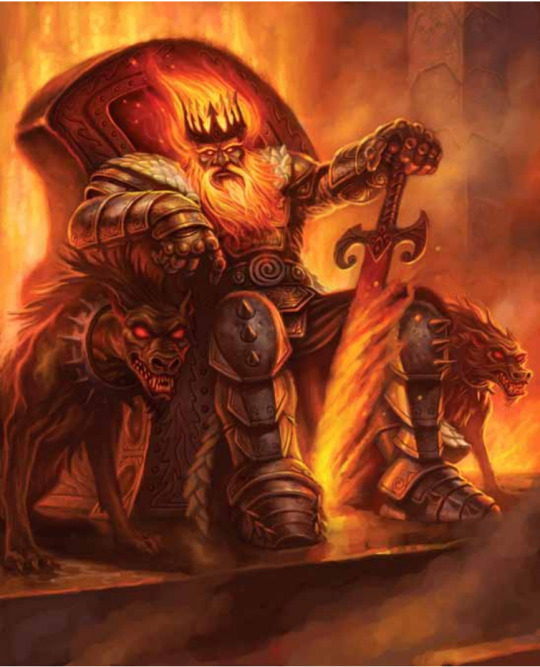

For a guy who is functionally a one-off NPC that the party presumably kills, he ends up in a lot of paintings. Not that I'm complaining, that 4e art is amazing. In fact, broadly, 4e's art is a little underrated, it benefits from being less restrained than 5e. I don't think that's a knock on 5e's artists, more like…the art direction seems to be intentionally tamer. Anyway, thank you 4e art, I never realized there was a dog in the background of the 5e PHB until now. Neat.
Yada yada yada the setup is exactly the same as before, but now it's got ~mordor vibes~. As far as changes change, these fire giants (even the children) expressly do not do morale checks because apparently Snurre is such a motherfucker. Scary!
Anyway, we're already in the room-by-room, so let's begin the juicy part:
There's a scooby doo trap with a tapestry in the doorway having holes for eyes so a giant guard can alert the entire building if the players don't catch it. That's evil! But not unfair, which is a good balance. Naturally, there is a ballista tripwire on revisit that does some nasty damage, so this hallway is just The Troll Zone
Snurre has two pet hellhounds leashed to his throne, but also he's wearing a white dragonskin as a cloak at all times, which overcomes his natural aversion to cold with MAGIC. What an asshole! Also, as you look at that picture from the 5e cover, there's a bevy of (unimportant) changes from the original, like Snurre is no longer in his signature pitch-black platemail, but I think special mention should go to the fact that in the original he has literally 60k worth of precious stones on his person and scattered throughout the architecture of the throne room. This room should be GLEAMING.
A Gygaxism: Queen Frupy is a 'haradin', which roughly means 'scold', which. Ok. So, so much attention is given to how uggo she is (to Gary). Actually, I think the description of her armor is kinda cool, she wears black dragonskin, studded with iron (so by Runescape logic I guess she's good with a bow?). Reaper Minis did a character that sort-of resembles the description, but their Vanja has a spear where Frupy uses a scepter:

You can actually negotiate with her, the implication of the text is that she's unreasonable but…just ignore that. Lol.
She also has a magic mirror (implied to be a furniture mirror, not a hand mirror) that reveals invisible creatures in the reflection, which is kind of awesome. Good way to catch assassins! Somehow the drow are using a gifted necklace to spy on them, but I feel like the mirror probably should've revealed in some way (maybe the mirror was also a drow gift?) She's more astute than she lets on, because she has a huge stash of mind control crap in her dresser drawers for emergencies.

????????????????????????????
Keeping with the "giant leader's treasure sucks" tradition, Snurre's treasure is genuinely crazy. It occupies a FULL PAGE, and each INDIVIDUAL TRUNK has a listing and an explicit mention of the traps. Traps range from a standard scything trap to secret snakes to the treasure being invisible to contact poison. How the hell does Snurre use this room? You're telling me he never fucked up remembering which of the 13 chests were trapped in which way? Oh, also, they're pick-proof, because fuck you thief. Naturally, the loot itself is also a fucking trap, because while there is some truly amazing stuff in there (20 randomized magic items, a decent amount of valuables, a +3 ring of protection, and a ring of 3 wishes), there is also lots of troll items (statues with a stacking curse of -1 to all tests, ring of contrariness, ring of delusion). On the whole, a big fuck you to the party. Oh, and while the locks are unpickable, you can shoot them off with magic missile, which is…why?
Snurre's dwarf-slave-advisor is bizarrely well equipped and loyal, and given the opportunity to escape he will…backstab the party. As much as people complain about how early DND has too many save or die traps, I genuinely think the regularity with which rescued npcs betray the party is a waaaaaay dumber and more ridiculous trend. I simply cannot fathom why someone as smart as Obmi would choose to keep being a slave to Snurre when adventurers showed up with the ability to free him. Honestly? Take his big lie and make it true. The lie makes sense because it makes more sense than the canon character.
The scroll that finally tips at the motivation of the giants is, no kidding, scroll #68 of almost 450 paper items, none of which are mentioned. The weird need for a number baffles me.
The kitchen is doing some lateral thinking and using one of the gas vents as a gas stove, which is hilarious.
Oh, we're only now to level 2?
All of the former kings are entombed in a Giant Tomb, which, that is entirely too cool of a visual for them to have not included a visual. In a fucking grave mistake, this room is cut from the 4e remake, so there is no incredible art of it. There is no justice.
If you somehow didn't kill the hill giant chieftain AND you didn't get him in G2, he's here in G3. And he brought the pet bears!

Gary, you're such an asshole. No one would ever think to throw their cool mace into the lava pit mid combat. This is just trolling.
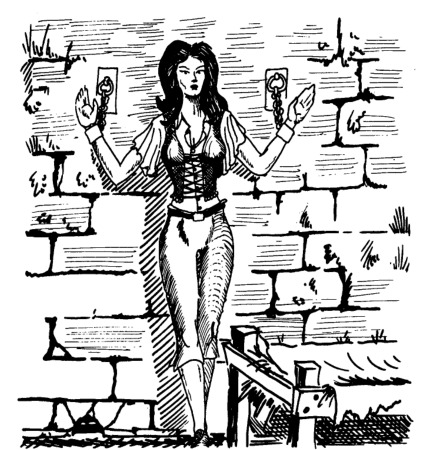
🤷 Guess I'll die
"The were-rats, if losing, will turn into rats and flee down the drain" That is, actually an incredible escape plan, except that we have pre-established that this Hall is founded upon LAVA AND COOKING-HOT GAS.

Fuck the party I guess
You often hear people who got into ADND in the late 1e/2e era talk about how people speculated that Hommlet must lead to Temple of Elemental Evil because of hints about the Elemental Eye and, honestly it just kind of feels like Gary defaults to the Eye. It has come up in every scenario he has written so far (which admittedly is 2 so far), but with the power of Knowing What Comes Next I can assure you that this is going to keep happening. Anyway, there is a temple to the Eye here, complete with human sacrifice, and the allusion to tentacles eating people is already starting to signpost what we now know is true: It's Tharizdun. The Eye is Tharizdun. It always comes back to Cthulhus!

A lot of early players clearly enjoyed Poking Random Shit because if you decide to touch the Elemental Eye's altar and also play every musical instrument in the room, you get to make every person in the room roll on this table, AND also execute whichever player is nearest to the altar (no save). But, hey, you will suddenly get whatever you want most on the altar. If you are somehow dumb enough to do it again, there's a 1 in 12 chance you get a +1 in all stats, a 2 in 12 chance of something extremely bad happening, and a 9 in 12 chance nothing happens.

Would genuinely like to know how many GMs bothered following this instruction. It does teleport you towards the final encounter, so that's something.
An entire page is dedicated to disarming the tentacle wall magic trap, which to be honest looks like it'd repel a significant percentage of players because you either need an evil cleric or some good magic to dispel the wall, and the wall punishes the shit out of you for trying to disarm it. To be a mild devil's advocate, the tentacle wall IS super suspiciously placed (the shape of the room implies it's going somewhere), so at least it's not also super esoteric. If you DO bypass it, you are now the proud winner of the "discover the drow" award! Woah, elves but they're ontologically evil??????????????????????????????????? Truly novel! Eclavdra, head of the drow here, hangs out doing nothing in particular, and you may unceremoniously execute her if you want to bring her storyline to an unceremonious end.
The frost giants are here from last module, if they survived. They really want you to kill these kings!
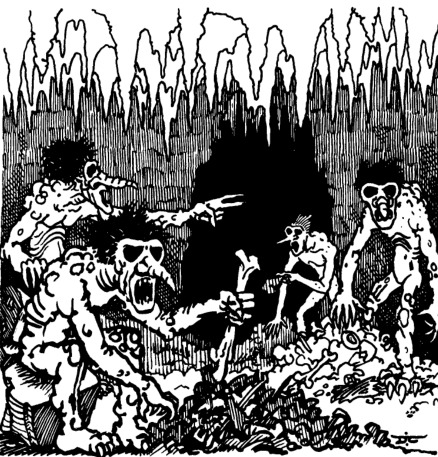
No really why did they used to draw trolls like that
This adventure just won't end. There's a surprising amount to say about this module given that it's only 22 pages of monster murder and motherfucker traps. Anyway, welcome to level 3!
There are fake dragons here to troll you into getting excited for loot
The fire giants also have a panic room? Every giant has a panic room. Why are panic rooms so normal in the G series?
A SECOND fake dragon that is actually a gorgon, which is almost funny
Finally, a REAL red dragon, which is frankly cruelty to fool me three times
After many, many drow are fought, you eventually run into a magic-fighter drow noble who has a wand of "viscid globs", which despite the suggestive name, is actually a superglue gun? You can literally rip yourself apart trying to separate yourself from a glued object. It's a really, really bizarre item. And it has a LOT of charges -- 79.
Mercifully, finally, something that could be potentially interesting: Eclavdra's rival is hanging out in the basement and can be sweetalked into helping the party screw over Eclavdra, which. FINALLY. However, if you displease her, it's demon time.
For reasons I cannot fathom, there are mind flayers here observing the drow, and the drow are not super bothered by that.
And that's basically it! at the very end they find a tube with a map and a wish leading to the D series, and a quick explainer on the then-new Drow. Well, not that quick, it's a page and a half, but the conceptualization of the drow is basically unchanged between then and now. Evil elves, forced underground, adapted to living there, dark skin, magic spidersilk clothes and adamantine weapons, sunlight sensitivity, drow spell list.
On the whole, G3 is, an adventure. While yes the Drow twist is kind of neat (but not special, since Drow are functionally Melniboneans and Elric was already decades old at this point), mostly this module lacks the fun of G1 and substitutes lots of murder traps for any genuine creativity with the scenario. On the whole, I consider it…crowd pleasingly boring? Your treasure goblins will love it for how much nice stuff they can find, if they survive.
We will end today with the back cover, which features some hippogriff mounts. People just don't give parties flying mounts anymore, it's honestly strange the tradition died. See you in the D series later. And if you're waiting for more obscure modules…I can only promise one in 1978.

7 notes
·
View notes
Photo
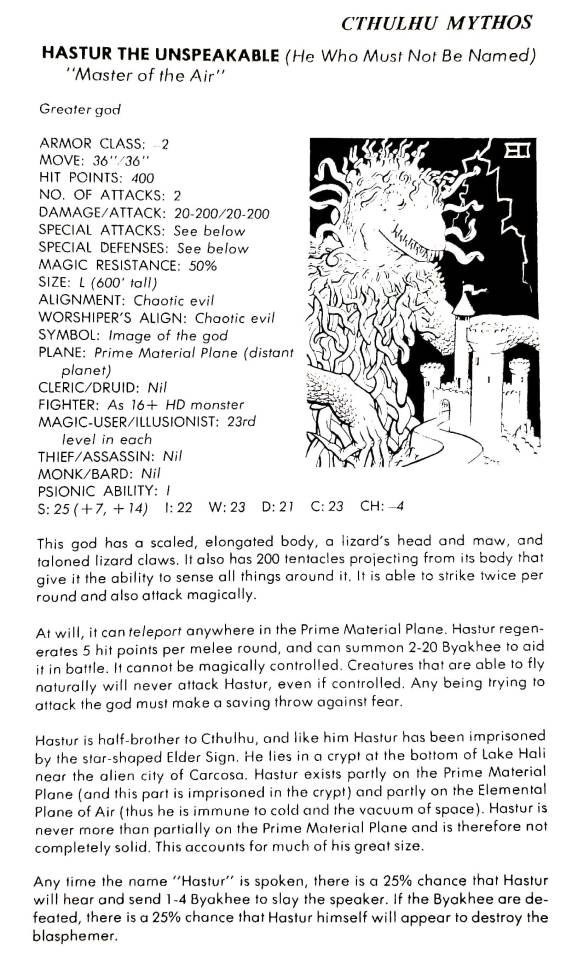

Image description: two scans from the 1980 edition of the TSR Advanced Dungeons and Dragons sourcebook Deities and Demigods. The first is of the text accompanying the entry for Hastur, a full transcript of which is under a readmore link. The second is a close-up of the illustration and depicts a lizard like creature covered in tentacles behind a castle. It is considerably larger than the castle and there is a bolt of lightning in the background. The upper right corner has a stylized signature of the letters E and O, indicating that Erol Otus is the illustrator of this particular image.
End image description.
My dad owns a copy of the Deities and Demigods book from before the copyright strike, and I haven’t seen any scans of Hastur from it around tumblr so. Here it is! The whole thing is very influenced by August Derleth’s interpretation of the Cthulhu Mythos, and I have Opinions about that, but this is specifically where the “don’t say Hastur’s name more than four times or he’ll come Get You” thing comes from, which I think is a very neat bit of history and trivia!
One other thing I find interesting is that there is no mention of The King in Yellow (the play) in this section. There is also no mention of the Yellow Sign, Cassilda, or Camilla, though Lake Hali and Carcosa are mentioned as part of an “alien planet”.
The book is credited to James M. Ward and Robert J. Kuntz, and edited by Lawrence Schick.
The illustrations are credited to the following: Jeff Dee, Erol Otus, Eymoth, Darlene Pekul, Paul Jaquays, Jim Roslof, David S. LaForce, David C. Sutherland III, Jeff Lanners, and D. A. Trampier.
Text transcript is as follows:
HASTUR THE UNSPEAKABLE (He Who Must Not Be Named) “Master of the Air”
Greater God
ARMOR CLASS: -2
MOVE: 36″/36″
HIT POINTS: 400
NO. OF ATTACKS: 2
DAMAGE/ATTACK: 20-200/20-200
SPECIAL ATTACKS: See below
SPECIAL DEFENSES: See below
MAGIC RESISTANCE: 50%
SIZE: L (600′ TALL)
ALIGNMENT: Chaotic evil
WORSHIPER’S ALIGN: Chaotic evil
SYMBOL: Image of the god
PLANE: Prime Material Plane (distant planet)
CLERIC/DRUID: Nil
FIGHTER: As 16+ HD monster
MAGIC-USER/ILLUSIONIST: 23rd level in each
THIEF/ASSASSIN: Nil
MONK/BARD: Nil
PSIONIC ABILITY: I
S: 25 (+7. +14) I: 22 W: 23 D: 21 C: 23 CH: -4
This god has a scaled, elongated body, a lizard’s head and maw, and taloned lizard claws. It also has 200 tentacles projecting from its body that give it the ability to sense all things around it. It is able to strike twice per round and also attack magically.
At will, it can teleport anywhere in the Prime Material Plane. Hastur regenerates 5 hit points per melee round, and can summon 2-20 Byakhee to aid it in battle. It cannot be magically controlled. Creatures that are able to fly naturally will never attack Hastur, even if controlled. Any being trying to attack the god must make a saving throw against fear.
Hastur is half-brother to Cthulhu, and like him Hastur has been imprisoned by the star-shaped Elder Sign. He lies in a crypt at the bottom of Lake Hali near the alien city of Carcosa. Hastur exists partly on the Prime Material Plane (and this part is imprisoned in the crypt) and partly on the Elemental Plane of Air (thus he is immune to cold and the vacuum of space). Hastur is never more than partially on the Prime Material Plane and is therefore not completely solid. This accounts for much of his great size.
Any time the name “Hastur” is spoken, there is a 25% chance that Hastur will here and send 1-4 Byakhee to slay the speaker. If the Byakhee are defeated, there is a 25% chance that Hastur himself will appear to destroy the blasphemer.
#cthulhu mythos#hastur#the king in yellow#dnd#carcosa#advanced dungeons and dragons#deities and demigods
106 notes
·
View notes
Text


#RPGCovers Week Nine
Metamorphosis Alpha (1976)
David C Sutherland, III
This is one of those games from my childhood that I have an unreasonable fondness for. It came out in 1976, around the time I first started playing D&D thanks to my sister. We got a local games stone a couple of years later in 1978, carrying all kinds of earlier role-playing releases and wargames.
But I don’t think I saw this for another couple of years: when my sister brought it home. You have to remember print runs and distribution were wildly spotty in those days. I think she’d bought or borrowed it off of someone else. By that time I was already playing Gamma World 1e, so this felt like a throwback, a weird dead end in sci-fi gaming.
And that cover– so amateur and wildly 1970s. Even as a kid I knew this was not great art and not great layout. But it had so much going on across it and wild colors. The way the red text of the TSR push text is washed out by the background or the white on black text of the blurb on the screen kind of gets squashed and tilted.
It’s trying hard…and as a way to grab the imagination of the potential players, it does invite you to wonder: if not about the game’s story, then what was going through the artist’s mind when they put this together.
9 notes
·
View notes
Text
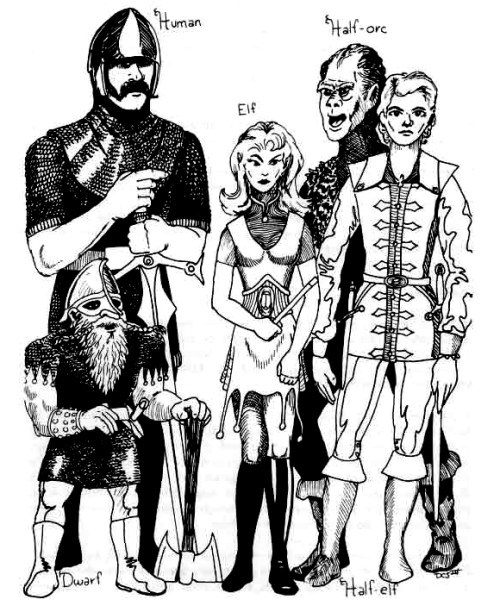
by David C Sutherland III
3 notes
·
View notes
Photo





This, my friends, is the Hong Kong kaiju dinosaur critter that would one day grow up to become the classic Dungeons & Dragons monster, the Owlbear.
These guys, along with what would become the rust monster and the bulette (as well as a bunch of other weirdos that never turned up in D&D), used to fill out packages of plastic toy dinosaurs. For some reason. The sort you would occasionally find at super markets or five and dimes back in the 70s and 80s (and, honestly, I’ve seen rust monsters in similar cheap-o toy packs as recently as a couple years ago in my local Foodtown). Gary Gygax used them as miniatures in his games, and thus they transcended into legend.
I wish I could talk to the person who sculpted this thing and get a sense of what they were thinking. Its so…doofy. But magical. I’ve read that these weirdos were intended to be knock-off Ultraman kaijus and that sort of makes sense – the Owlbear does look a bit like the Kappa from Japanese folklore. Kind of. But whoever made the decision to include them in the States with plastic dinosaurs was some kind of mad genius. I love it.
For whatever reason, of the three, the Owlbear is the hardest to come by. I’ve been looking for one for decades, but boy, was it worth the wait. Oh, and, a little bit of extra D&D history – this particular Owlbear was one of several owned by no less an august personage than @DiTerlizzi, who offered to sell me one when he was cleaning out his shelves. If you told me 20 years ago that THIS was how I’d finally get my hands on an Owlbear, I’d have spit in your eye and called you a no good dirty liar.
#RPG#TTRPG#Tabletop RPG#Roleplaying Game#D&D#dungeons & dragons#David C Sutherland III#Gary Gygax#Owlbear#DiTerlizzi
804 notes
·
View notes
Photo
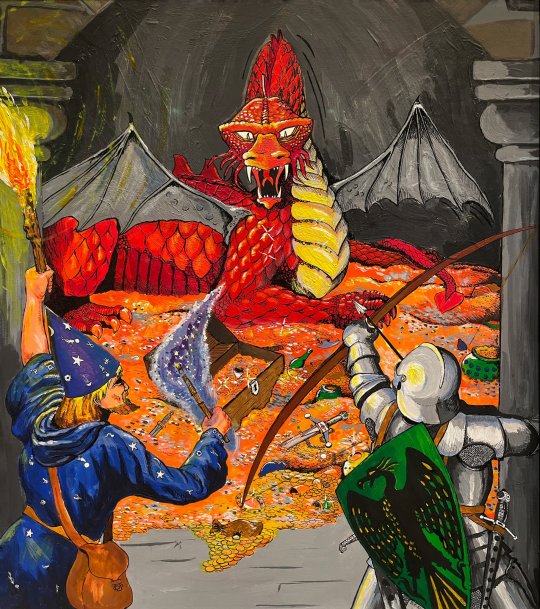
Game night! David C. Sutherland III, cover illustration for the Dungeons & Dragons Basic Set (TSR, 1977). Acrylic on board, 24 5/8 x 22 inches. Showcased in the exhibition Enchanted: A History of Fantasy Illustration, Norman Rockwell Museum, Stockbridge, Mass., summer–fall 2021.
__________________________________________________
Our shop: https://bookshop.org/shop/manyworldspress
#David c. Sutherland iii#dungeons & dragons#basic d&d#red dragon#TSR hobbies#gary gygax#dave arneson#j. eric holmes#holmes basic#gaming history#fantasy art#game art#norman rockwell museum#game night#original art
123 notes
·
View notes
Photo

Advanced Dungeons & Dragons - art by David C. Sutherland III (1978)
#david c. sutherland iii#advanced dungeons & dragons#70s fantasy art#monster manual#fantasy art#ad&d art#gary gygax#paladin#seventies#1978#chronoscaph scans
306 notes
·
View notes
Text
Iconic AD&D art - Top 5
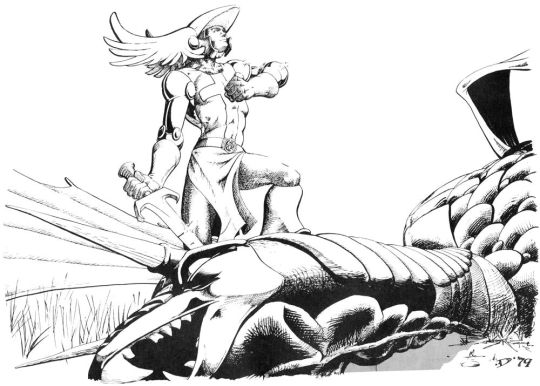
Jeff Dee, Paladin and Black Dragon, AD&D 1st edition Rogues Gallery

Russ Nicholson, Githyank and adventurers, AD&D 1st edition Fiend Folio

Erol Otus, Lolth, AD&D 1st edition Dungeon Module Q1

David C Sutherland III, ‘A Paladin in Hell’, AD&D 1st edition Players Handbook

David Trampier, ‘Emirikol the Chaotic’, AD&D 1st edition Dungeon Masters Guide
Explanation below the cut.
Obviously a list like this is highly subjective, and I should probably make it clear that by “iconic” I mean “iconic to me”, as these were a handful of the AD&D 1st edition illustrations that had a big impact on my experience with the game, and by extension, how I design characters and write adventures (for Dungeons & Dragons and beyond) to this day.
Some of my admittedly arbitrary criteria:
I made my picks from the books, modules and supplements that were on my shelves back in the day. Which isn’t a comprehensive list by any means. To me, the canon is the core three hardbacks (to this day, I think of Unearthed Arcana as new-fangled and the Survival Guides as niche products we didn’t use) plus Fiend Folio and Deities & Demigods; that run of modules that included the A, B, D, G, and S-series, plus a few others like C1 and Q1; and accessories including Rogues Gallery and the booklet of character sheets. That list is as arbitrary as it is inexhaustive.
I limited myself to black & white interior illustrations, meaning David Trampier’s superb cover for the Players Handbook was disqualified. I did it this way mostly because I felt it would be unfair to compare color paintings to ink drawings. I’m not sure if that’s true or not, but that’s how I did it. That said, had I allowed Tramp’s PH I’m actually thinking it might be the only color piece in there… The original Dungeon Masters Guide and Monster Manual covers never resonated with me to the same degree. Of the modules I included, there are three covers I really like, and they’re all by Erol Otus: A4, ‘In the Dungeons of the Slave Lords’; C1, ‘Hidden Shrine of Tamoachan’; and S3, ‘Expedition to the Barrier Peaks’. But they’re not quite iconic, somehow, in the sense that they’re too specific to the adventures they illustrate. In contract, the Players Handbook cover doesn’t tell you about someone else’s adventure, it inspires yours.
In the interest of a varied selection, I decided no one artist could be chosen more than once. This was basically to make sure Trampier and Jeff Dee didn’t crowd out other worthy illustrators.
My choices, in alphabetical order by last name:
Jeff Dee, Paladin and Black Dragon, Rogues Gallery, page 22. Paladins were always cool, and this drawing made them double extra cool. A lot of my peers complained that Dee’s characters all looked like super-heroes, and that they belonged in the pages of his Villains & Vigilantes. And that’s arguably true. But as a life-long reader of comics and V&V gamemaster, I didn’t mind at all. And that style is on display here: skintight plate and chain mail, aerodynamic helmet, and floppy fold-over Musketeer boots. But the pose is perfect, the dragon is superb, and the emotion of the paladin’s triumph shines. Jeff Dee did other illustrations that vied for his spot here: the “sci-fi Mind Flayer” and the Intellect Devourer stalking the party (both from ‘Expedition to the Barrier Peaks’), Icar holding flaming grease (frontispiece from Dungeon Module A2), and assorted entries in Deities & Demigods too numerous to mention.
Russ Nicholson, Githyanki fighting adventurers, Fiend Folio, page 45. Compared to the Monster Manual, which included so many creatures recognizable from myth and folklore, the Fiend Folio was weird. But the monsters that were cool immediately rivaled the classics, and the ones Russ Nicholson drew became my favorites. The Gith races were awesome from the get-go, and this illustration, supplementing the individual entries for the Githyanki and Githzerai, went a long way to inspiring us to put them in our dungeons. (I was so enamored of the Gith that I worked them into the origin story of a player character in the Villains & Vigilantes campaign I ran.) The adventurers here look outmatched, maybe, but they haven’t given up. We wondered what spell the Magic User was casting.
Erol Otus, Lolth frontispiece, Dungeon Module Q1, ‘Queen of the Demonweb Pits’: I love Erol Otus, but compared to Trampier and David Sutherland, his drawings could get wonky. Intentionally, I’m sure, but often his costumes and anatomy and such are a little far-fetched even for Dungeon & Dragons. (He loved horned helmets and loincloths, often on the same character.) This drawing of Lolth is great, in that it sets the stage for the adventure (in a way that Jim Rosloff’s cover doesn’t, honestly) and depicts Lolth as vampy without being overtly “sexy” like all the topless goddesses in Deities & Demigods. The demons here are especially good, with solid anatomy and dramatic lighting. This drawing is “so Erol Otus” without being “too Erol Otus”.
David C Sutherland III, ‘A Paladin in Hell’, Players Handbook, page 23. Unlike Trampier, who rarely missed, DCS was uneven: some of his drawings are classics, and many of them were mediocre then and just as mediocre now. ‘A Paladin in Hell’ is a classic, for several reasons. Firstly, it’s just really well drawn. Absent is the scratchy hatching that mars some of Sutherland’s work. Second, the paladin is perfect in the sense that he is believable; then and now I appreciate that fact that his armor is historically accurate and looks like suits I’d seen in museums. And third, the collected devils are all drawn to scale, showing their size the way Monster Manual spot illustrations don’t. Finally, the glow of the paladin, and what is surely a +5 Holy Avenger, is dazzling.
David Trampier, ‘Emirikol the Chaotic’, Dungeon Masters Guide, page 193. It’s difficult to see this drawing and not want to run a campaign set in the bustling capitol city of the Flanaess’ mightiest empire in which a villain Magic User is on a crime spree. (It’s the same feeling you get when you read any of Fritz Leiber’s stories set in Lankhmar. In fact, you want to go get the map they made for the AD&D supplement, including those awesome city geomorphs.) If Emirikol is the errant NPC, maybe the PCs are the adventurers stumbling out of the tavern into the exquisitely rendered (that hatching!) street to protect the innocent townsfolk being Magic Missiled. So who is Emirikol? He looks enough like Trampier that he could be one of many self-portraits sneaked into his AD&D artwork. (I’ve always wondered if he was Tramp’s PC in Gary Gygax’s Greyhawk campaign, though I’ve never gotten any indication that they actually gamed together.) This really cements Trampier’s stature; the Dee and Sutherland illustrations on this list evoke a single character or moment, while ‘Emirikol the Chaotic’ evokes an entire campaign. You don’t get more iconic than that.
#dungeons and dragons#D&D#AD&D#illustration#david trampier#david sutherland#jeff dee#erol otus#russ nicholson#brg
119 notes
·
View notes
Text
James Roslof and David C. Sutherland III - Illustrations and Maps for N3: Destiny of Kings (1986)


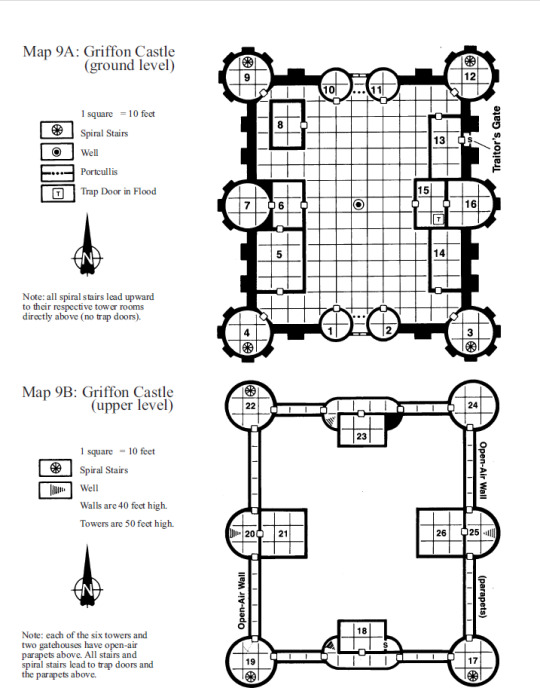
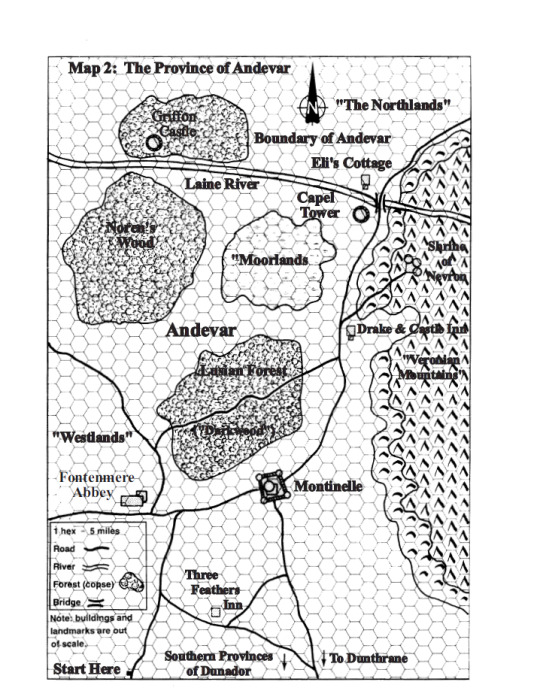
7 notes
·
View notes
Text
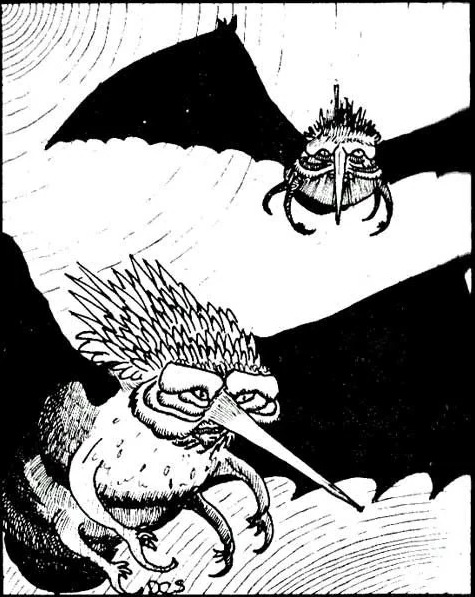
Who doesn't love a blood-sucking stirge… on Thac0 Thursday!!
Credit: David C. Sutherland III from the AD&D Monster Manual (1979)
2 notes
·
View notes
Text
No. 5 - D2, Shrine of the Kuo-Toa (August 1978)
Author(s): Gary Gygax
Artist(s): David C. Sutherland III (Cover), David A. Trampier
Level range: Average of 10, preferrably party size 7+ players
Theme: Underground exploration
Major re-releases: D1-2 Descent into the Depths of the Earth, GDQ1-7 Queen of the Spiders
I'm almost speechless. This is the most 1e module cover to ever have 1e'd. It is perfection. The way the combat is perfectly perpendicular to the step pyramid. The bondage gear fishman who has a complete fishhead so you 100% understand he's a fishman. Lobster mommy saluting the troops. It's just….it's what dreams are made of.

So I'm already in love with this module, deeply and irrationally in love with it, before breaking the cover. If you're BORING you might prefer the later Jim Roslof cover art that's got lame things like technical proficiency. Ugh. The shit I have to put up with.
Anyway, there's a lot to talk about with D2! It's a lot of firsts for an official TSR product, and critically it's a lot of GOOD firsts.
It's the debut of the Kuo-Toa, one of the most fun groups of people in D&D! It's the first module that doesn't presume the enemy will be inherently aggressive! It's got a lot of negotiation and learning! The only good type of gnomes debuts with the Svirfneblin! This model of "alien settlement where you are not instantly attacked but you gotta learn the social rules and play along" is just the best. This will be done again in U2 and I adore U2. Yeah it's how it feels to go to a different country, especially one that doesn't speak your language, and just have everything be a little "off" compared to what you're used to, but. To me, it will always be The Autistic Experience. How well and quickly can you learn these bizarro social rules you can't intuit and what's the fewest number of whacks to the head it takes to get there? How long can you swallow your complaints when you see stuff that's obviously cruel, but the people around you don't perceive it as cruel anymore because it's The Way Things Are and they will actively defend the cruelty of it?
Ok, ok, back to your regularly scheduled program.
Gary starts off this week's festivities by telling you to be toxic to your players:

Sometimes it feels like there's three Garys in a trenchcoat and they take turns writing the modules.
So D2 starts in the cave at the immediate end of D1 and, let me derail already by saying that I really, really hate old-style hex maps. I cannot follow them -- I don't mean I don't understand how you're supposed to follow them, I mean it's nearly impossible for me to follow the diagonal to the destination. Your coordinate here is R20. Here is your map. Follow the 20 axis diagonally upward and rightward until you intersect with the R row. Can you do it?

Personally, I can't. My eye cannot follow that straight line, it will get lost in the mix of blank identical hexes and occasional interest objects. I sat here trying to follow it for 5 minutes and I couldn't do it. I need a straightedge to do it. The correct answer is that if you follow the light blue area from the bottom right towards the top left, it's the hex up and left of the fourth fully black hex you run into -- the leftmost of the two touching black hexes. I tested this against a few guinea pigs and no-one else could mange it either. Later we will admit defeat and that this axial coordinate system for hexmaps is, uh, really fucking bad, and replace it with offset coordinates (or even better, double coordinates) which more closely resemble normal cartesian coordinates, and by extension are not Eye Strain Central. They have the downside of different eyestrain (tiny font) and that you literally cannot fit as many hexes on the page, but the point of a graphic is to communicate information and the axial coordinate hexmap is bad at that unless you're playing on a huge table with like, two DM screens.
Yes this rant should've gone in D1, mea culpa. In my defense, D1-2 is, basically one module in two parts, they're not really separable.
Here's the coordinate lined out for you, since I imagine many of you have the same issue:

So, now that I have a headache trying to read, we can get to the actual text of the adventure again. Now keep in mind that max movement rate is 1 hex per 1 inch of movement for the slowest member of the party (so like, your guy wearing platemail has 60ft of movement, 10ft to the inch: 6 hexes per day). This means you could hypothetically arrive at the final location as quickly as 22/6=4 days of gameplay, 3 if no one including hirelings wore plate. That is, if you beelined to D2 by sheer luck, never got lost, never got distracted, never got slowed down, never had to take a rest day. Which is good because the food in The Depths seems questionable.
The first segment of the adventure is mostly reprinted from D1 -- random tables and maps and the like. We do get the addition of everyone's favorite early DND trope: a slavery table! And also happilly we get some goopy guys to move your eyes away from that shit:

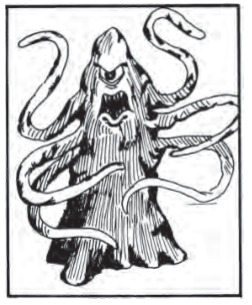

Which, is a lot more my speed. More goopy guys. It's a roper, actually, although I frankly didn't recognize it. It looks more like the monster from Dexter's Lab? Apparently Ropers have changed a lot in the last 50 years.
So it's all random tables teasing that we're going to end up arriving at a shrine soon. There is a special entry in the back for the new Kuo-Toa and Svirfneblin, and oddly the Svirfneblin don't get a header? We don't learn much. We know that they're natural elemental summoners, that they're "natural fighters", and that they live at some unstated cave somewhere. They like their stun gas darts, they "communicate with racial empathy" (which I guess means body language?) outside their own domains, deep gnomish at home, and underworld cant when they're trading, plus earth elemental-ese. So they learn a lot as kids. They love them some traps, too, basically they're the gnomish Rambos and I love them for it.
Meanwhile, our titular Kuo-Toa get a pretty standard write-up. Driven underground, human sacrifice, raiders, like their war parties. Their priests like their mancatchers, which are based on lobster claws, they spawn in pools, they can spontaneously generate lightning by holding hands (???), are too slippery to grab, can see both infrared AND ultraviolent, can see you moving through basically any magical means, immune to poison, paralysis, charming, sleep, and are resistant to magic missile and lightning. This is, very very weird. They are wildly powerful compared to their later versions, and the only upshot is that they're readily blinded by light spells. Apparently they go insane with such regularity that they have a dedicated social role to controlling or killing the crazed? Yeah these people are a piece of work.
We get a little setpiece moment here where, essentially, there's a rogue kuo-toa who will offer you a trip across the river for 10g. He only speaks kuo-toa and he'll sicc his giant fish on you if you don't say yes fast enough. In fact, a lot of ink is spilled on this little moment, which in all likelihood will be a brief conversation and some passing of money.
Before you get into the shrine proper, some svirfneblin offer to help you in the shrine if you go halfsies on treasure (with almost that exact wordchoice).
Finally, we end up in the shrine proper, which is keyed so let us enter Keyed Mode ™️
The whole area is lit by glow-in-the-dark lichens, which is a spooky way to reveal the lobster lady idol up on the pyramid
While the party can choose to politely integrate into the crowd and play along, there's lots of little things to harass them into nonconformity. Leeches, horrifying offerings, offerings of increasing amount, having to correctly pronounce nonsense names (Blibdoolpoolp????????), holding a live lobster, it's a good bit.
You can, in fact, visit the goddess, who will give you a boon (if you give an offering) or a geas (if you don't), which also grants you kuo-toa speech and also a mark of loyalty, which is neat. You can also encounter her if you fuck around in the prince's treasure room, so the odds of meeting her are actually pretty good! Note that this is pre-"Kuo-Toa believe their gods into existence" so in this case they are worshipping a (hypothetically) permanent, naturally-occurring deity. Being that this is 1e and she is a she, she is Extremely Naked. She is later called The Mother of Lusts, which is one hell of a title.
If you fail to get the priest-prince when you meet him, he actually has a pretty rock-solid escape plan and will come back with an army. So, probably whack him if possible. I really like when antagonists have the sense to piss off and come back armed, rather than pridefully stand and die. You get the sense that Va-Guulgh is priest-prince because he plans contingencies like this, whereas other Kuo-Toa simply vibe. That being said, the Kuo-Toa are apparently not equipped for a search, so it's pretty easy to ditch them.

Sigh.
We do not have a dramatic declaration of THE END anymore, which is a terrible shame. We instead get a more reasonable "This is the end of the section."
The magic of D2 is more in the play and less in the overview. Like, look at this map:

This is a pretty naturalistic map. This is just how you'd arrange a major structure, rather than the kind of nonsense layouts you see in a lot of early dungeons. I don't put much stock in "Gygaxian Naturalism", I think Gary presented pretty intensely game-y spaces and they only seemed naturalistic by 1970s published product standards, but nonetheless he was paving the way compared to some of the silliness you got in pre-G1 modules. This map is good, I think, in that it becomes super extremely obvious to the players from the moment you enter that they extremely do not want to provoke a full alarm -- this is a shrine where you want to kill as few Kuo-Toa as you can, and as many of those as you can behind closed-doors -- it's time to straight up bail if the alarm goes off because you are not beating the hundreds of guys here if you you provoke them up front.
We end with some rust monster art, my favorite monster that I never use because I think I'd get shanked if I did. See you next time in D3!

5 notes
·
View notes
Text
Best Serial Killer Movies of the ’90s Ranked
https://ift.tt/3tcsgCf
Someone must have left the freezer door in the morgue open, because grisly reminders of the past are thawing before our eyes. You can see it this weekend with the release of John Lee Hancock’s The Little Things, a throwback to the days when movie stars hung out at crime scenes instead of in spandex, and it’ll be more apparent next month with the launch of Clarice, a television spinoff of 1991’s The Silence of the Lambs. All the evidence points to only one conclusion: the serial killer thrillers of the ‘90s are back!
Not that we’re complaining. For a macabre minute or two, every Hollywood name appeared eager to play either the detective or the killer—the hunter or the obsessed, which often proved interchangeable for both characters. Granted that means there can be something formulaic about many of these movies. Yet they can also be bleak, hard-edged, and ambiguous. From our modern gaze, where the dominant studio conventions prefer reassuring morality tales and sunny lighting, these movies’ preference for shadows and discomfort in the mainstream is kind of startling.
So grab your magnifying glass and fortify your stomach, because we’re about to revisit some of the best (and worst) of ‘90s serial killer thrillers. (Also this list is strictly for the decade when the genre was at its height and it excludes slasher movies like Scream, which may feature serial killers but were not exactly adult-oriented thrillers.)
12. Eye of the Beholder (1999)
Eye of the Beholder is a tonal oddity that only passingly flirts with the conventions of ‘90s serial killer thrillers, all while it tries to pay homage to (read: rip-off) Alfred Hitchcock. But any credit it deserves for deviation—including making Ashley Judd’s central femme fatale the killer—it loses in execution. As a muddied, impenetrable tale about an intelligence officer (Ewan McGregor) who spies on and falls in love with a serial killer, Eye of the Beholder is a scattershot of bad ideas that run the gamut from ludicrous to misogynistic.
Beauty may be in the eye of the beholder, but this movie will close the lids over your pupils inside of 30 minutes.
11. Nightwatch (1997)
It feels a little mean to rag on Ewan McGregor back-to-back, but maybe serial killer movies just aren’t his genre? That could be at least one takeaway from an ill-advised double feature of Eye of the Beholder and Nightwatch, the latter of which is a remake of a 1994 Danish film that I’ve not seen… and probably won’t since both the original film and American remake are directed by the same man.
McGregor plays medical student Martin here, a kid who gets an after school job by becoming the night watch security at the local morgue. But as a series of grisly prostitute murders pile up, Martin realizes he needs to figure out who the killer is—that or continue to be framed by the necrophiliac fiend who keeps coming by the morgue for one last liaison. It’s exactly as skeevy as it sounds. Do yourself a favor and go your whole life without hearing Nick Nolte sing “This Old Man” while climbing onto a corpse.
10. Natural Born Killers (1994)
The movie that Quentin Tarantino disowned, Natural Born Killers is a seedy mess based on a Tarantino script that was heavily rewritten by Oliver Stone, David Veloz, and Richard Rutowski. The concept itself is a seemingly inevitable escalation of the “bad romance outlaws” archetype that’s been floating around Hollywood since at least 1950’s Gun Crazy, and which was then made iconic by Bonnie & Clyde (1967).
But whereas those films relied on bank robbers living fast, Natural Born Killers descends into a seeming final form with Mickey and Mallory (Woody Harrelson and Juliette Lewis) as giddy serial killers who are eventually out for maximum carnage. Technically the pair are supposed to be presented as victims of traumatic child abuse—and who are then wrongfully glorified by the media. But Stone’s sloppy and tanked vision lacks the discipline to achieve anything beyond its maliciousness. Early sequences imagining Mallory’s abusive childhood like it’s a television sitcom, and later psychedelic visions of Robert Downey Jr.’s opportunistic news reporter as the Devil, do little to divorce the film from its shallow self-satisfaction in close-ups of heads being shot.
The movie came under controversy in the years after its release for inspiring alleged copycat killers as well as school shooters. It feels irresponsible to blame media for actual violence, but it’s still quite an indictment that Stone’s attempt to criticize media glorification became a favorite for many a disturbed individual with a gun.
9. Kiss the Girls (1997)
When studying competent, middle of the road Hollywood thrillers, Kiss the Girls is a solid place to start. As a decently made bit of studio convention, the movie is anchored by strong elements like Morgan Freeman as James Paterson’s literary hero, Alex Cross, and Ashley Judd as Kate, the victim who survives a masked killer’s attempt to abduct her into his harem.
Moments like Kate’s escape sequence through the North Carolina wilderness are effectively filled with adrenaline, and Judd particularly gives the salacious piece conviction. However, it is salacious to a fault. Even if the movie toned down the source novel’s even more lurid misogyny, the film studies Kate and the other victims with a lascivious male gaze, blurring sex with violence, real world horror with leering entertainment. Right down to its title, the film can be rightly criticized as Hollywood glamourizing another story about violence against women. Whether that damns the whole movie depends on the viewer, but it certainly keeps it low on our list.
8. The Bone Collector (1999)
Marketed with a hell of a tagline about there being thousands of taxi cabs in New York City that’ll get you home—and one that won’t—The Bone Collector is almost comically slavish to the clichés of ‘90s moviemaking. The wrinkle here is that after a faux cab driver begins abducting his victims off the street, the crime psychologist who must stop him is entirely stuck by his bedside. Due to a tragic accident, Denzel Washington’s Lincoln Rhyme is paralyzed from the neck down. Yet he is still able to catch serial killers by communicating in the earpiece of police officer Amelia Donaghy (an entirely unconvincing Angelina Jolie).
Read more
Movies
Lost Girls Review: Netflix Takes on the Long Island Serial Killer
By Rosie Fletcher
Books
The Last Book on the Left Takes on the Grim History of Serial Killers
By Alec Bojalad
Together the pair stay one step behind the mystery killer’s tracks as he executes a series of increasingly gruesome and ridiculous murders. It’s preposterous, and in some ways a forerunner for Saw with the satisfaction it takes in absurd death traps, but Washington is effortlessly compelling, even when he never leaves his apartment. As a bit of absurd Hollywood fluff, right down to the ultimately lackluster unmasking of the killer, it can be entertaining, even if you’ll deny it afterward.
7. Copycat (1995)
More potent than I remembered, Copycat is a genuinely well-crafted Hollywood thriller that may not reinvent the wheel but takes it out for a damn good spin. In the driver’s seat is Sigourney Weaver as Dr. Helen Hudson, a criminal psychologist who is an expert on serial killers until one follows her into the bathroom after a guest lecture. He nearly hangs her from the ceiling. Following that white-knuckled opening, the film jumps years ahead and Helen has become agoraphobic and afraid to leave her home.
Yet when a local series of murders reveal the pattern of a predator imitating the methods of his favorite “celebrities”—one crime scene is like the Boston Strangler and another emulates the horrors of Jeffrey Dahmer—Helen is pulled out of retirement by a no-nonsense detective (Holly Hunter). The winning chemistry between Weaver and Hunter—who are refreshingly free from the studio-mandated romantic subplots in some of the other movies on this list—and the blunt force power of their performances aid this sincerely disquieting flick. A needlessly convoluted third act aside, the movie still works as a warning about the danger of fanboys a generation early.
6. Fallen (1998)
Denzel Washington appears again thanks to this clever supernatural spin on the serial killer genre. At the beginning of Fallen, Washington’s John Hobbes appears on top of the world. The serial killer he chased for years (Elias Koteas) is about to breathe deeply in the gas chamber. Yet after the lever is pulled, and with Koteas singing the Rolling Stones’ “Time is On My Side” until his last breath, a funny thing happens: the murders continue.
In fact, more than just the killings, strangers in the street sing “Time is On My Side” in Hobbes’ ear, and he soon realizes that he faces a devil of a killer whose been operating since the beginning—quite literally since the villain is a demon who was once an angel that fell with Lucifer. It’s a bizarre premise given strutting confidence thanks to Washington’s performance, as well as good supporting work by John Goodman and Donald Sutherland. Twenty years later and its ending still sticks with me.
5. The Exorcist III (1990)
If you haven’t seen The Exorcist III, we know what you’re thinking: “Really?!” Yes. In fact, this isn’t even an exorcist movie; it should’ve been titled Legion like the 1983 novel it’s based on. Alas writer-director William Peter Blatty was forced to use the title and do reshoots that added an exorcism in the climax. Still, this supernatural thriller which involves a serial killer back from the dead is far better than it has any right to be.
Following the character of Lt. Kinderman from the 1973 masterpiece, the middle-aged gumshoe is now played by George C. Scott instead of the late Lee J. Cobb, and he possesses Scott’s usual love for contrasts between the restrained whisper and a bombastic howl. He also makes a sympathetic, secular detective forced to face the horrors of Hell when a series of murders committed against Catholic priests appear to be the work of the Gemini Killer (Brad Dourif), a serial killer whom Kinderman sent to the chair more than 10 years ago.
Read more
Movies
The Exorcist III is a Classic and Better Than You Remember
By Jim Knipfel
Movies
The Exorcist Is Still the Scariest Movie Ever Made
By David Crow
Somehow the fiend—plus Kinderman’s long dead pal Father Damien Karras (Jason Miller)—appear to now be living in the same body of a John Doe kept in a mental asylum. With an unrelenting atmosphere of dread, palpable tension, and more of Blatty’s intellectual struggle with concepts of faith and evil, the film is more high-minded than its hacky title suggests. It also features one of the best jump scares in movie history.
4. Summer of Sam (1999)
The only movie on this list directly based on an actual serial killer’s crimes, Spike Lee’s Summer of Sam is a serious-minded joint. However, it’s only partially about the murders perpetrated by David Berkowitz, aka the “.44 Caliber Killer,” aka the Son of Sam. Rather the film focuses on the effects a serial killer has on the culture of New York City during the sweltering summer of 1977, and how it affects young lives trying to make it in the big city.
Influenced by Lee and his co-writers Michael Imperioli and Victor Colicchio’s memories of growing up in 1970s New York, the pic is a love letter to a grim moment in history when the city was about to explode with murders, blackouts, crime, and disco. All of this is digested from the vantages of Vinny (John Leguizamo), a philandering hairdresser guilt-ridden for cheating on his wife (Mira Sorvino), and his childhood pal Ritchie (Adrien Brody), who’s left the old neighborhood behind to join the fledgling punk rock scene.
With a greater interest in how a serial killer affects the culture and institutions of a city on edge than being a traditional crime drama, Summer of Sam is a bit of a forerunner to David Fincher’s far more polished Zodiac from a few years later. With heavy-handed dialogue and a plot too big for Lee to fully get his arms around, even at 142 minutes, Summer of Sam can be uneven and messy. But it has the sweaty incorrigibility of a long night out, and of revelries half remembered like from a fever dream.
3. The Talented Mr. Ripley (1999)
The rare serial killer movie told entirely from the perspective of the killer, Anthony Minghella’s The Talented Mr. Ripley is disarmingly creepy. Despite its glossy awards bait sheen, there is a cold-blooded streak that runs deep to the heart of the piece, likely due to Patricia Highsmith’s source 1955 novel. Starring Matt Damon fresh off his Good Will Hunting golden boy sheen, the film uses its casting to disorient and ultimately disturb.
Like Highsmith’s book, the film is not structured like a traditional thriller. It instead favors a detached ambivalence about its seemingly nebbish hero as he agrees to become an errand boy for the rich by traveling to 1950s Italy in order to retrieve a silver spoon cad (Jude Law) for his father. But the more time Tom Ripley (Damon) spends with Law’s Dickie Greenleaf, the more he grows envious of Dickie’s lifestyle, his wealth and confidence, and maybe even his affection for socialite Marge (Gwyneth Paltrow). There is a subtle—too subtle due to ‘90s Hollywood conventions—homoerotic undercurrent throughout the film as Ripley slowly works up the courage to take his first life. It won’t be his last.
Read more
Movies
Knives Out: When Murder Makes You a Better Person
By Natalie Zutter
Movies
Seven: The Brilliance of David Fincher’s Chase Scene
By Ryan Lambie
Highsmith wound up publishing four subsequent sequels to The Talented Mr. Ripley, but unfortunately no more were made with Damon. Perhaps because this was too unsettling for an ongoing franchise.
2. Seven (1995)
While watching David Fincher’s masterful Seven, the thing that immediately stands out is the oppressive nihilism that permeates throughout. There were decades of neo noir before this detective yarn about the hunt for a serial killer, but none demonstrated such an overbearing sense of despair before the opening credits were even concluded. And perhaps what makes it unshakable is how welcoming the film is toward bleakness; it succumbs long before the gut-punch finale.
Telling the story of an old cop days from retirement (Morgan Freeman) and a hotheaded rookie detective (Brad Pitt), Andrew Kevin Walker’s script has an economy of pace that still impresses despite its cynicism. Very quickly one murder becomes two, then three, and soon four. Yet none of the atrocities are reveled in by Fincher’s blocking; they’re off-screen mutilations which leave psychic damage on his two leads and, eventually, us. The deaths also quickly establish a pattern that their serial killer is targeting seven souls, each intended to embody one of the seven deadly sins.
The movie is a classic now for its climax where the killer “John Doe” (a reptilian Kevin Spacey) turns himself in and leads the cops into the darkest pit, but it’s the entire package that makes this one linger more than 25 years later. At the end of the film, Somerset quotes Hemingway by saying, “‘The world is a fine place and worth fighting for.’ I agree with the second part.” I’m not convinced his film does.
1. The Silence of the Lambs (1991)
As the film that kick-started the idea that serial killers could create their own film genre, The Silence of the Lambs still remains the best of its kind. Blessedly unaware that it was creating conventions for countless copycats, the film tells its psychological drama with simplicity and clarity. Whereas other films on this list bask in their bleakness, there is a dogged optimism and even perverse warmth to this Jonathan Demme adaptation of Thomas Harris’ Silence of the Lambs novel. And that’s of course largely attributable to the casting of Anthony Hopkins and Jodie Foster.
As Dr. Hannibal Lecter, Hopkins is of course monumental. It’s a performance that turned a quinquagenarian into an overnight movie star, and became Hopkins’ calling card as he returned to the not-so-good doctor’s well one too many times. Still, he’s undeniably enthralling as Hannibal, a cannibal psychologist with superhuman powers of observation and mental menace. Even so, Foster is often overlooked by critics for her own contributions as the FBI trainee who’s proverbially fed to the incarcerated Lecter—a pretty face to get the serial killer to consult pro bono on the crimes of another mass murderer. It’s just one more example of casual sexism faced by Clarice that gives Foster as much to play as Hopkins.
Read more
Culture
David Fincher’s Zodiac: The Movie That Never Ended
By Don Kaye
Movies
The Little Things Ending Explained
By David Crow
Surrounded by the slights and prejudices of men—be they in law enforcement or straight jackets—Clarice is constantly underestimated. She finds an intellectual rapport with Hannibal, but she pulls herself out of the darkest night, and the screaming of the lambs, without assistance. Her perseverance matched by Hannibal’s darkly seductive qualities is the juxtaposition that makes Silence of the Lambs one of the finest films of its decade.
cnx.cmd.push(function() { cnx({ playerId: "106e33c0-3911-473c-b599-b1426db57530", }).render("0270c398a82f44f49c23c16122516796"); });
The post Best Serial Killer Movies of the ’90s Ranked appeared first on Den of Geek.
from Den of Geek https://ift.tt/3r5iYGk
17 notes
·
View notes
